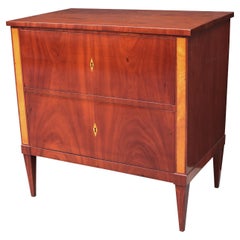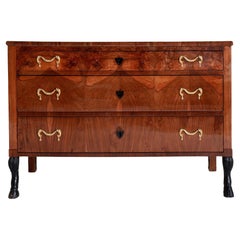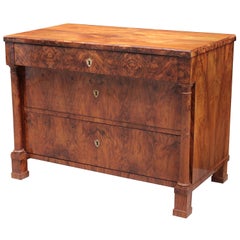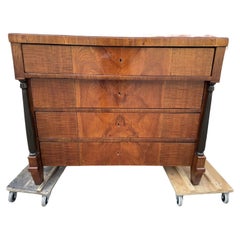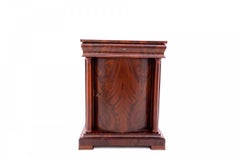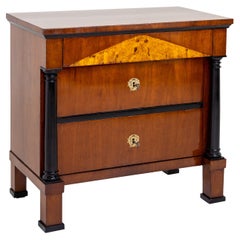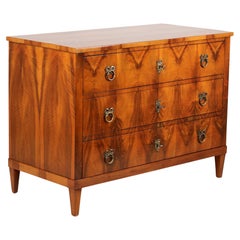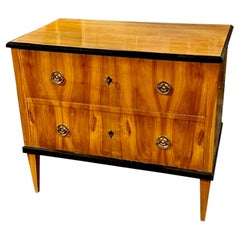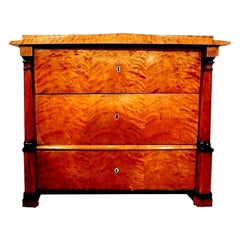Antique Biedermeier Chest
1830s Austrian Biedermeier Antique Biedermeier Chest
Wood
Early 19th Century Biedermeier Antique Biedermeier Chest
Brass
1830s German Adam Style Antique Biedermeier Chest
Walnut
1820s English Antique Biedermeier Chest
Wood
1860s Unknown Biedermeier Antique Biedermeier Chest
Walnut
1820s German Biedermeier Antique Biedermeier Chest
Wood
Early 19th Century German Biedermeier Antique Biedermeier Chest
Walnut
Early 19th Century German Biedermeier Antique Biedermeier Chest
Walnut
19th Century Austrian Biedermeier Antique Biedermeier Chest
Wood
1820s German Biedermeier Antique Biedermeier Chest
Walnut
1820s German Biedermeier Antique Biedermeier Chest
Walnut
1840s German Biedermeier Antique Biedermeier Chest
Elm
Early 19th Century German Antique Biedermeier Chest
Cherry
1820s European Biedermeier Antique Biedermeier Chest
Walnut
1820s German Biedermeier Antique Biedermeier Chest
Walnut
1820s German Biedermeier Antique Biedermeier Chest
Cherry
1820s German Biedermeier Antique Biedermeier Chest
Walnut
Early 19th Century German Biedermeier Antique Biedermeier Chest
Cherry
1830s Austrian Biedermeier Antique Biedermeier Chest
Cherry
Early 19th Century German Biedermeier Antique Biedermeier Chest
Walnut
1820s German Antique Biedermeier Chest
Bronze
1830s German Biedermeier Antique Biedermeier Chest
Pine
1820s Danish Biedermeier Antique Biedermeier Chest
Mahogany
Early 19th Century German Antique Biedermeier Chest
Walnut
Early 19th Century German Biedermeier Antique Biedermeier Chest
Cherry
1810s German Biedermeier Antique Biedermeier Chest
Walnut, Yew
1840s German Biedermeier Antique Biedermeier Chest
Birch
Mid-19th Century Austrian Biedermeier Antique Biedermeier Chest
Birdseye Maple, Spruce
Early 19th Century Austrian Biedermeier Antique Biedermeier Chest
Pine
1820s German Biedermeier Antique Biedermeier Chest
Walnut
1830s German Biedermeier Antique Biedermeier Chest
Cherry
1820s German Biedermeier Antique Biedermeier Chest
Brass
Mid-19th Century Austrian Biedermeier Antique Biedermeier Chest
Walnut
1820s German Biedermeier Antique Biedermeier Chest
Cherry
Mid-19th Century Austrian Biedermeier Antique Biedermeier Chest
Brass
Mid-19th Century German Biedermeier Antique Biedermeier Chest
Mahogany
Early 19th Century German Biedermeier Antique Biedermeier Chest
Bronze
Early 19th Century German Biedermeier Antique Biedermeier Chest
Walnut, Spruce
1820s German Biedermeier Antique Biedermeier Chest
Walnut
Mid-19th Century Austrian Biedermeier Antique Biedermeier Chest
Brass
1850s Swedish Biedermeier Antique Biedermeier Chest
Birch
Mid-19th Century Austrian Biedermeier Antique Biedermeier Chest
Brass
Mid-19th Century German Biedermeier Antique Biedermeier Chest
Cherry
Early 19th Century German Biedermeier Antique Biedermeier Chest
Walnut
Early 19th Century Austrian Neoclassical Antique Biedermeier Chest
Walnut
1830s Danish Biedermeier Antique Biedermeier Chest
Mahogany
Early 19th Century German Biedermeier Antique Biedermeier Chest
Walnut
Early 20th Century German Biedermeier Antique Biedermeier Chest
Wood, Hardwood, Maple
1830s German Biedermeier Antique Biedermeier Chest
Metal, Brass
1810s German Biedermeier Antique Biedermeier Chest
Cherry
1830s German Biedermeier Antique Biedermeier Chest
Walnut
Early 19th Century German Biedermeier Antique Biedermeier Chest
Walnut, Burl
19th Century German Biedermeier Antique Biedermeier Chest
Spruce
Early 19th Century German Biedermeier Antique Biedermeier Chest
Magnets
Mid-19th Century German Biedermeier Antique Biedermeier Chest
Brass
19th Century Biedermeier Antique Biedermeier Chest
Cherry
19th Century German Louis Philippe Antique Biedermeier Chest
Wood, Spruce
19th Century Biedermeier Antique Biedermeier Chest
Cherry
Late 19th Century Danish Antique Biedermeier Chest
Brass
1830s German Biedermeier Antique Biedermeier Chest
Walnut
- 1
- ...
Antique Biedermeier Chest For Sale on 1stDibs
How Much is a Antique Biedermeier Chest?
Finding the Right Commodes-chests-of-drawers for You
Shopping for a commode or a chest of drawers?
Commode is the French term for a low chest of drawers, but it is also sometimes used to denote any case piece with a particularly intricate design. The commode dates to circa 1700 France, where it was used as an alternative to a taller cabinet piece so as to not obscure paneled, mirrored or tapestried walls. Coffers, or chests, which were large wooden boxes with hinged lids and sometimes stood on ball feet, preceded chests of drawers, a fashionable cabinet furnishing that garnered acclaim for its obvious storage potential and versatility. The term commode was also used to refer to a piece of bedroom furniture — a washstand or nightstand that contained a chamber pot.
As time passed, French and British furniture makers led the way in the production of chests of drawers, and features like the integration of bronze and ornamental pulls became commonplace. Antique French commodes in the Louis XV style were sometimes crafted in mahogany or walnut, while an Italian marble top added a sophisticated decorative flourish. This specific type of case piece grew in popularity in the years that followed.
So, what makes a chest of drawers different from a common dresser? Dressers are short, and chests of drawers are overall taller pieces of furniture that typically do not have room on the top for a mirror as most dressers do. Tallboys and highboys are variations of the dresser form. Some chests of drawers have one column of four to six long drawers or three long drawers in their bottom section that are topped by a cluster of small side-by-side drawers on the top. To further complicate things, we sometimes refer to particularly short chests of drawers as nightstands.
Even though chests of drawers are commonly thought of as bedroom furniture to store clothing, these are adaptable pieces. A chest of drawers can house important documents — think of your walnut Art Deco commode as an upgrade to your filing cabinet. Nestle your chest near your home’s front door to store coats and other outerwear, while the top can be a place to drop your handbag. Add some flair to your kitchen, where this lovable case piece can hold pots, pans and even cookbooks.
When shopping for the right chest of drawers for your home, there are a few key things to consider: What will you be storing in it? How big a chest will you need?
Speaking of size, don’t dream too big. If your space is on the smaller side, a more streamlined vintage mid-century modern chest of drawers, perhaps one designed by Paul McCobb or T.H. Robsjohn-Gibbings, may best suit your needs.
At 1stDibs, we make it easy to add style and storage to your home. Browse our collection of antique and vintage commodes and chests of drawers today.
- 1stDibs ExpertSeptember 9, 2024To tell if a chest is antique, first examine its materials and details carefully. An antique chest is one produced 100 years ago or more. This generally predates the use of engineered wood, particleboard, plastics and other synthetic materials. As a result, an antique chest usually features solid wood construction.
In addition, antique chests are likely to be handmade, so you should be able to spot subtle signs that indicate this, such as tool marks and small irregularities in any carvings. If a piece looks flawless and regular, it is unlikely to be antique. Locating a maker's mark and then researching when the manufacturer was active can also help you date your chest. Alternatively, you can use the services of a certified appraiser or knowledgeable antique dealer to learn more about your chest.
On 1stDibs, shop a large selection of antique chests. - 1stDibs ExpertNovember 4, 2024To identify an antique chest of drawers, look inside and beneath drawers and on the back and bottom for any type of maker's marking. Researching these marks using trusted online resources may allow you to determine who produced your chest and roughly date your piece. If your chest is at least 100 years old, it is an antique. Should you be unable to locate the maker's marks, look at the hardware. Rose head nails, one-piece cast brass pommels on the drawer handles and circular rather than hexagonal bolts may all indicate that a piece is an antique. Keep in mind that hardware may have been replaced at some point and that there are many reproductions of antique furnishings. As a result, you may wish to have a certified appraiser or experienced antique dealer complete the identification process if you're unable to identify your chest via the maker's markings. Find a range of antique chests of drawers on 1stDibs.
